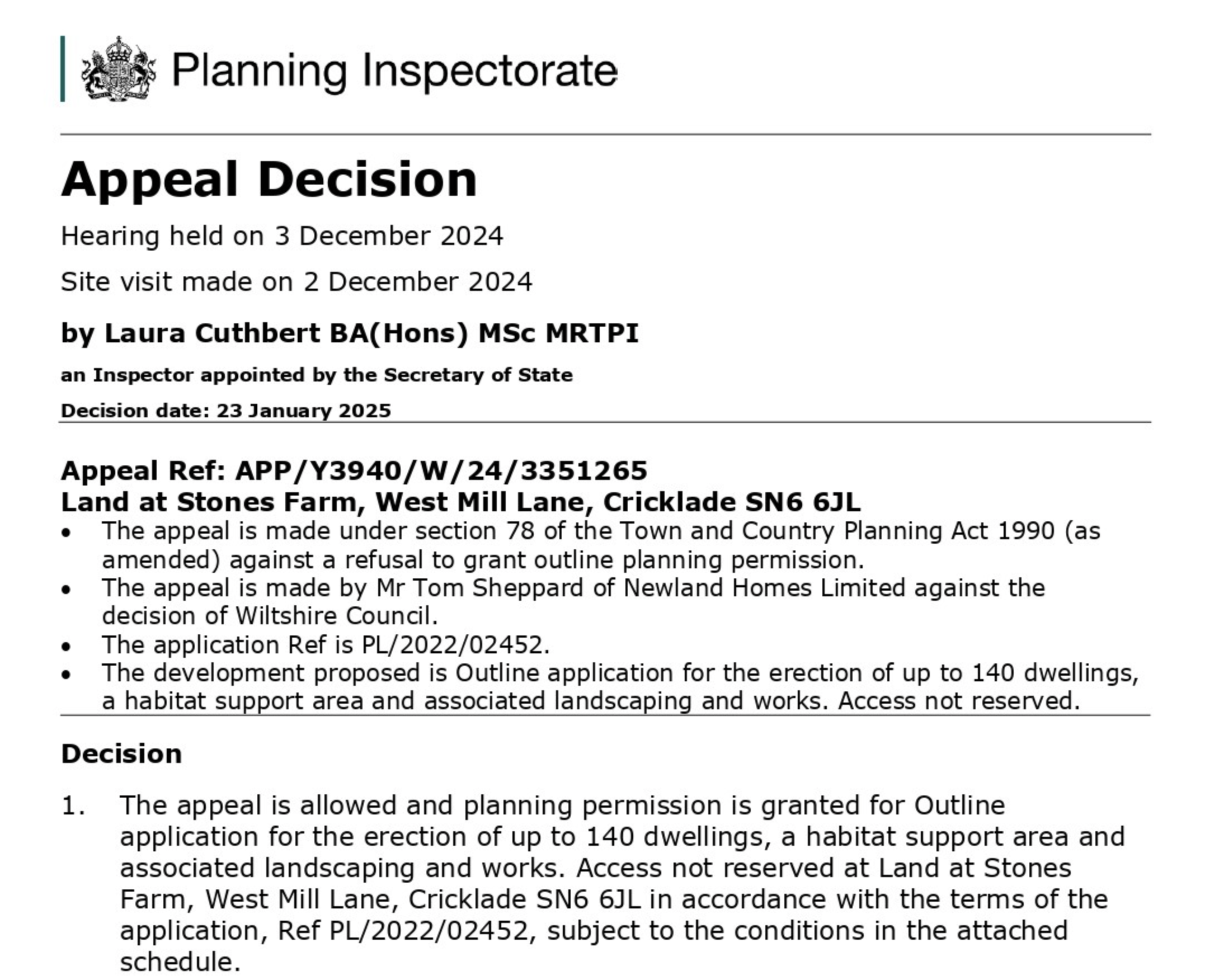Vision Planning
Planning for 140 homes in Wiltshire

Planning permission for 140 homes in Wiltshire.
Vision Planning is delighted to have secured planning permission at appeal for 140 homes at Stones Farm, Cricklade for Newland Homes.
A key challenge with this proposal was the potential impact on the neighbouring internationally important habitats site at North Meadow. The team worked with Natural England to find a solution that mitigates any potential harm, in the form of an 11 hectare Habitat Support Area, that will benefit existing as well as new residents, as well as providing funding towards the management of North Meadow.
The Inspector also concluded that Wiltshire has only 2.03 years housing land supply, which opens the door for other housing developments in Wiltshire via the “tilted balance”.
This success was a great team effort. Along with Vision Planning, the consultancy team included Ethos Environmental Planning, David Wilson Partnership, Barton Hyett Associates, Smith Grant LLP, Cotswold Archeology, MHP Design and Cole Easdon Consultants.
As a result of the Government’s drive to deliver more housing, many Councils are now in the same position as Wiltshire, with a higher requirement and the tilted balance applying.
If you have a potential housing site, in Wiltshire or elsewhere, please get in touch and complete the form below.

